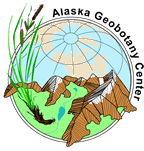
Circumpolar Arctic Vegetation Map
Introduction -
Vegetation -
Bioclimate Subzones -
Floristic Provinces -
Landscape -
Substrate Chemistry
Elevation -
Lake Cover -
NDVI and Above Ground Biomass -
AVHRR Base Map
Bioclimate Subzones

Select image to enlarge
View maps - Download data - GoogleMap
A fundamental problem for the CAVM is how to characterize the transitions in vegetation that occur across the roughly 10 °C mean July temperature gradient from the tree line to the coldest parts of the Arctic. The important role of summer temperature has been noted with respect to a wide variety of ecological phenomena, including phenology (Sorensen 1941), species diversity (Rannie 1986; Young 1971), plant community composition (Matveyeva 1998), biomass (Bazilevich et al. 1997, Bliss and Matveyeva 1992), and invertebrate and vertebrate diversity (Chernov and Matveyeva 1997). Various authors, working with different geobotanical traditions, have divided the Arctic into bioclimatic regions using a variety of terminologies. The origins of these different terms and approaches have been reviewed by the Panarctic Flora (PAF) initiative (Elvebakk 1999). The PAF and CAVM have accepted a five-subzone version of the Russian zonal approach. The subzone boundaries are somewhat modified from the phytogeographic subzones of Yurtsev (1994) based on recent information from a variety of sources. Subzone A is the coldest subzone whereas Subzone E is warmest.
Table 1. Vegetation properties in each bioclimate subzone.
Table 2. Other Arctic bioclimate zonation approaches.
Photographs and descriptions of each subzone:



